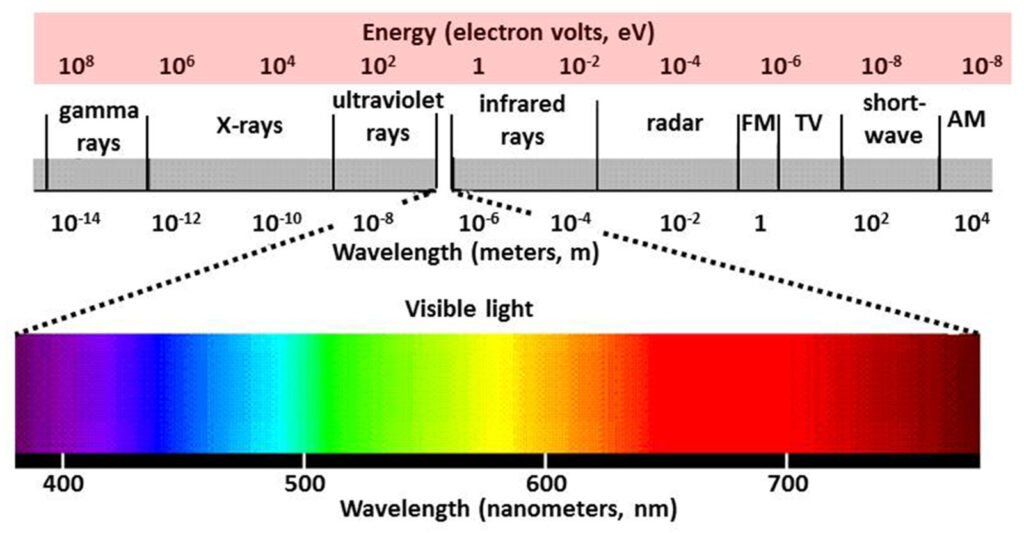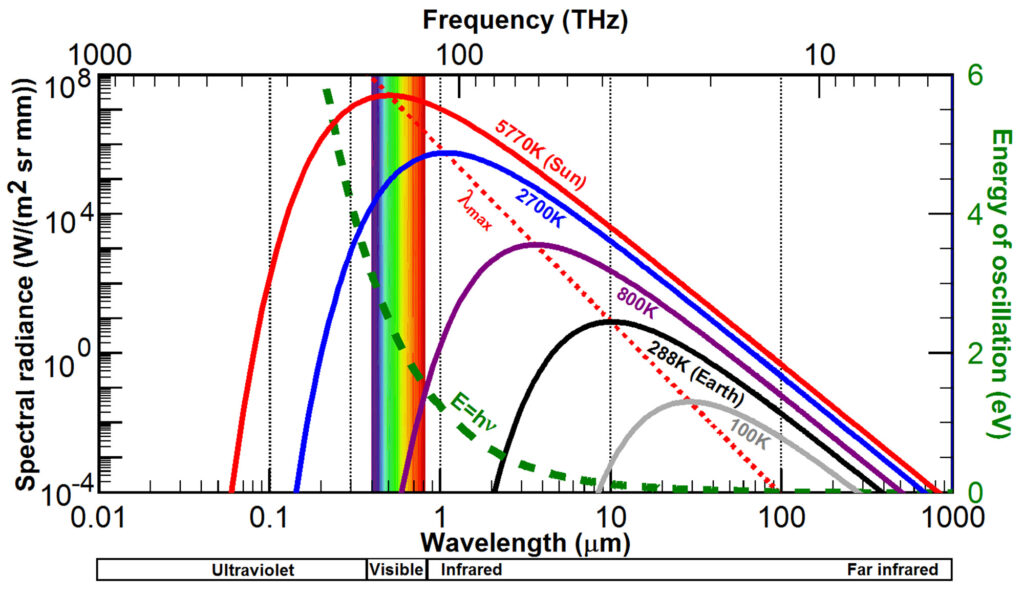The Spectrum of Electromagnetic Radiation

The spectrum of electromagnetic radiation is, in theory, infinite, but is observed to extend at least from gamma rays with wavelengths of 10-14 meters to AM radio waves with wavelengths of 105 meters. The part of the electromagnetic spectrum most important for heat and temperature is shown below ranging from extreme ultraviolet to the far infrared. The solid lines show the radiation from a black body with the temperature shown in Kelvin according to Planck’s law. The red line shows the radiation for the Sun at 5770K; the blue line for the filament of an incandescent light bulb at 2700K; the black line for the Earth at 288K. The dashed red line connects the peak spectral radiances (λmax) for each temperature, a consequence of Wien’s displacement law. The dashed green line shows the energy (E=hν) at each wavelength according to Planck’s postulate.
Note that most of the energy relevant to heat and temperature is at visible and ultraviolet wavelengths. Also note that when you increase the temperature of a black body, the spectral radiance increases at all wavelengths and the peak spectral radiance is at a shorter wavelength. This implies that the radiation from a colder body cannot warm a warmer body even if it is perfectly absorbed.
